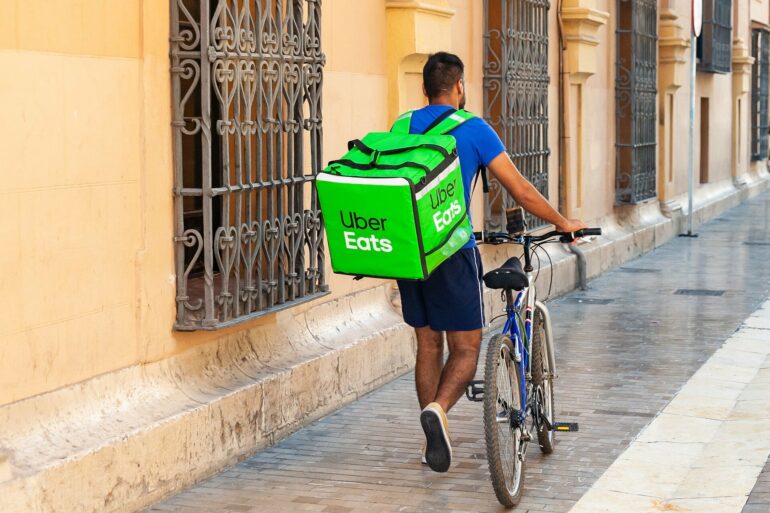As restaurants increasingly embrace technology for placing food orders, a new University of South Florida study reveals that digital ordering platforms significantly influence consumer behavior, often leading to more indulgent food choices and increased spending.
Co-authored by Dipayan Biswas, the USF Frank Harvey endowed professor of marketing in the Muma College of Business, the comprehensive study compares the cognitive effects of ordering from a digital screen to traditional methods, including printed menus.
As published in the Journal of the Academy of Marketing Science, major restaurant chains, such as Panera Bread and McDonald’s, have introduced touchscreen kiosks, while others like Chili’s and Applebee’s have implemented tabletop tablets for self-service. Further illustrating the shift towards digital ordering, the use of app-based delivery services, such as Uber Eats, Grubhub and DoorDash, has continued to grow since the COVID-19 pandemic.
According to the U.S. Department of Agriculture Economic Research Service, the pandemic caused significant changes in how U.S. consumers acquire food, particularly in the use of carryout and delivery services. Spending on third-party delivery tripled for quick-service restaurants and nearly quadrupled for full-service restaurants from pre-pandemic levels to late 2022.
“While digital ordering can enhance convenience and efficiency, many consumers will opt for unhealthier food choices and spend more,” Biswas said. “Our research highlights the importance of understanding the influence of digital devices on our decision-making.”
Through six studies at restaurants and two in a USF School of Marketing and Innovation lab, Biswas and his graduate students examined the effect of ordering off a digital menu versus a physical menu. The team reviewed more than 23,000 orders from a variety of restaurants, including an independently owned Mexican cuisine restaurant and a major global dining chain with 1,000 locations across 23 countries.
The study revealed 61% of digital orders, including those made for delivery, were unhealthy—more than 3% higher than non-digital orders.
Each item was placed into one of three categories: unhealthy, neutral or healthy. The team defined “unhealthy” by portion size and item choice, such as fried foods and desserts, while items, such as vegetables and fish, were considered healthy. Most soups, large salads and steaks smaller than six ounces were deemed neutral.
The team also found that digital menus have a greater impact on what consumers order for dinner, since they tend to be more exhausted and reliant on technology later in the day. Therefore, digital ordering technologies may have less influence on consumers during breakfast and lunch.
“Digital ordering modes foster a more automatic decision-making process with lower cognitive involvement,” Biswas said. “This is because digital tools encourage people to rely less on their cognitive resources and more on automated processes.”
This phenomenon, known as the “Google Effect,” suggests that the availability of digital tools changes how people store and retrieve information, such as relying on cell phones for contact numbers and GPS for navigation, leading to less cognitive effort in these tasks. This reduced cognitive involvement in digital contexts can result in more automatic decision-making, leading to more indulgent food choices.
The study revealed consumers who are more proficient with technology may be less susceptible to the Google Effect. According to Biswas, restaurant managers could use this research to tailor their offerings.
“Restaurant managers aiming to promote healthier options may benefit from offering non-digital ordering modes or some may be interested in promoting indulgent items during dinner hours through digital ordering to drive sales,” Biswas said.
Biswas plans to continue this research to further examine how the presence of a human, such as when ordering in person or on the phone, may impact consumers’ decisions, whereas online environments enhance a person’s level of perceived anonymity. He also wants to investigate how digital versus non-digital modes impact a consumer’s consumption volume and perceived taste of ordered items.
More information:
Annika Abell et al, Food and technology: Using digital devices for restaurant orders leads to indulgent outcomes, Journal of the Academy of Marketing Science (2024). DOI: 10.1007/s11747-024-01029-6
Provided by
University of South Florida
Citation:
Digital food ordering drives increased indulgence and spending, study reveals (2024, July 23)



